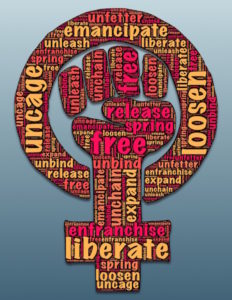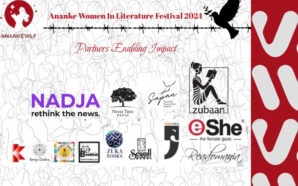Pedagogy is an important part of education, for it is the art of teaching. It helps guide the student on best teaching methods and how to raise consciousness.
Learning, teaching and development is underpinned by cultural, social and political values that we have. The sharing of ideas is an important element of education. Ongoing research and reflection is a core component of the evolution of pedagogy.
This paper explores elements that make up an effective community education program within a human rights learning framework, with a focus on feminist critique as well as socio-economic disadvantage, inequality and poverty.
The patriarchal systems of power that hinder women’s economic empowerment and lead to a lifetime of socio-economic disadvantage, inequality and poverty for the female gender cannot be ignored in the analysis. An effective community education program would emphasise the importance of women’s rights as human rights and that the circumstances that they find themselves in are not a reflection of their individual choices. It would also stress the importance of empowerment, participation, inclusion, equality of opportunity and anti-discrimination, self-determination and partnerships if it is to adhere to a rights based approach.
Pedagogy itself is underpinned by learning, teaching and development and strongly influenced by the cultural, social and political values we have. Child Australia notes that pedagogy evolves through ongoing research and reflection at all levels, including service and educator level. This ensures the continuous improvement of the educators’ practice with the aim of supporting the best possible outcomes (ChildAustralia, 2017).
Feminist Consciousness Raising
 Moreover, it is our assumptions and our pedagogical practice that helps to guide the political, practice and agenda and also adds to community connections and can spark resistance and change all by way of a feminist pedagogical approach (Irving, 2015).
Moreover, it is our assumptions and our pedagogical practice that helps to guide the political, practice and agenda and also adds to community connections and can spark resistance and change all by way of a feminist pedagogical approach (Irving, 2015).
Revolutionary feminist consciousness-raising has emphasised the importance of learning about patriarchy as a system of domination, how it became institutionalised and how it is perpetuated as well as maintained, emerges and entrenches.
Understanding the way male domination and sexism is expressed in everyday life has created awareness in women of the ways they have been victimized, exploited, and, in worse case scenarios, oppressed (hooks(b), 2000). Some of the ways in which we can argue that feminist pedagogy has been effective is by considering how much it has fostered social analysis, how much support was given to women in leadership, how much was dedicated to building organisations that were dedicated to supporting critical feminist pedagogy and finally how much social change was created (Irving, 2015).
Fostering political literacy in the age of neoliberalism
At the heart of critical pedagogy, is the desire to foster political literacy by challenging students to understand how power and privilege works in everyday life. It encourages students to think about how they can transform that knowledge in meaningful ways. McLaren believes that class analysis and class struggle plays a central role in critical pedagogy and this should in turn fundamentally challenge the social universe of capital that leads to social transformation within capitalist societies (McLaren, 2005).
In both the West and Global South, creeping neoliberalism has had profound implications on public services and on the survival of women’s organisations. Whereas in the 1970s there was considerable growth of feminist organisations, today we have cutbacks and shifts in funding priorities that have challenged the sustainability of women’s organisations (Irving, 2015).
Study of feminist activists highlights the effects of the present dominance of neoliberalism on theory and practice and the need for feminists to renew solidarity across cultural, national and economic lines (Irving, 2015). When using a feminist lens, it is imperative that we never give up asking questions if we wish to see feminism as a source of progressive change (Benería, 2005). Using a feminist lens, when analysing socio-economic disadvantage, poverty and inequality is imperative.
Female economic subordination in capitalist societies
Effective human rights activism should ideally involve the very people that it is advocating for. This is evident for example in the Money for Jam project which is underpinned by the issue of Australian women over 50 whom through no fault of their own, have become extremely vulnerable to poverty and homelessness. The project objective is to enable women at risk of poverty to create financial wellbeing through micro enterprise, therefore enabling them to be free from their exclusion from the economy (Lenaerts, 2016). Inequalities that have been generated by capitalism have a specific gender dimension. For twenty years, feminist literature has analysed extensively the specific forms of subordination of women in capitalist societies. The system does not allow for these women to thrive, or even just manage. A lot of older Australian women are stifled by economic policies, and current services fail to understand their specific needs. Participants in the project definitely expressed that they are tired of being pigeon holed and referred to mainstream services that don’t understand them or are not tailored to their needs (Lenaerts, 2016).
It is incoherent to conceptualise critical pedagogy, as do many of its current exponents, without consideration of the political and anti-capitalist struggle (McLaren, 2005). Education as a reciprocal procedure that advocates a sharing of ideas to achieve optimal outcomes for both facilitators and in this case, women who are in their 50’s and 60’s (hooks(a), 2003).
Education and Dialogue
 Hooks has emphasised the importance of continuing feminist education for critical consciousness for the sake of the survival of the movement (hooks(b), 2000). This in turn rings true to people in other movements such as trade unions and co-operative movements, who view the decline of their movement as a result of the lessening in education. Therefore, education must span all sectors of society including the community level, and must take on a variety of forms, including expression through popular performance such as music and theatre (Irving, 2015). Theatre of the Oppressed for example, allows participants to act out their social problems until they figure a solution that is accepted by the group and also brings to the front, imbalances of power (Boal, 1979). Important to education is dialogue, and Freire argues that “without dialogue there is no communication and without communication there can be no true education” (Freire, 1970). The Money for Jam project had fostered dialogue and encouraged the women to share their stories of their struggle which in turn led to the discovery that there are many Australian women over the age of 50, who are at risk of poverty. These stories also helped break stereotypes by highlighting that they are not necessarily from a low socio-economic background, but in fact many of the women have a good education, some even have had professional careers, simply a set of circumstances have led them to become at risk of poverty, or even homeless (Lenaerts, 2016).
Hooks has emphasised the importance of continuing feminist education for critical consciousness for the sake of the survival of the movement (hooks(b), 2000). This in turn rings true to people in other movements such as trade unions and co-operative movements, who view the decline of their movement as a result of the lessening in education. Therefore, education must span all sectors of society including the community level, and must take on a variety of forms, including expression through popular performance such as music and theatre (Irving, 2015). Theatre of the Oppressed for example, allows participants to act out their social problems until they figure a solution that is accepted by the group and also brings to the front, imbalances of power (Boal, 1979). Important to education is dialogue, and Freire argues that “without dialogue there is no communication and without communication there can be no true education” (Freire, 1970). The Money for Jam project had fostered dialogue and encouraged the women to share their stories of their struggle which in turn led to the discovery that there are many Australian women over the age of 50, who are at risk of poverty. These stories also helped break stereotypes by highlighting that they are not necessarily from a low socio-economic background, but in fact many of the women have a good education, some even have had professional careers, simply a set of circumstances have led them to become at risk of poverty, or even homeless (Lenaerts, 2016).
Of feminist pedagogy
Critical pedagogy has joined anti-racist and feminist struggles in order to articulate a democratic social order built around the imperatives of diversity, tolerance, and equal access to material resources (McLaren, 2005). Critical pedagogy plays an important role in addressing issues. Lenaerts argues that gender oppression, racism, class exploitation and ageism are just some of the issues, which are manifest hindrances for the women who are involved with the Money for Jam project (Lenaerts, 2016). Therefore, feminist pedagogy must also highlight the importance of intersectionality theory and the interconnected identities of individuals, and the way those identities are perceived and responded to by others, must be a part of any analysis (Potter, 2016).
Examining intersectionality is important inasmuch as awareness of intersections such as race, ethnicity, disabilities and ageism in the classroom can facilitate awareness of these as feminist issues with as much relevance as sexism and patriarchy. To bring the movement forward there must always be space for negotiation between various present conditions and the different pressures that these make on any future political goals (Sellberg, 2012).
 The women in the Money for Jam project lack housing security due to factors out their control. Addressing this, is a shared responsibility and is not in any way a reflection of their individual life choices. It is, at this point, that a human rights based approach to poverty is imperative. A human rights based approach to poverty requires the State and other powerful agents to address the real constraints that impede the ability of people in poverty to genuinely exercise their rights (Fredman, 2015). Human rights education should aim towards developing an understanding of everyone’s common responsibility to make human rights a reality in each community and in the society at large (OHCHR, 2011). Advocating the need to achieve gender equality, is a critical component of social change and Human Rights Education must strive to achieve this goal by highlighting the barriers that women face in an economic system that is set against their individual needs.
The women in the Money for Jam project lack housing security due to factors out their control. Addressing this, is a shared responsibility and is not in any way a reflection of their individual life choices. It is, at this point, that a human rights based approach to poverty is imperative. A human rights based approach to poverty requires the State and other powerful agents to address the real constraints that impede the ability of people in poverty to genuinely exercise their rights (Fredman, 2015). Human rights education should aim towards developing an understanding of everyone’s common responsibility to make human rights a reality in each community and in the society at large (OHCHR, 2011). Advocating the need to achieve gender equality, is a critical component of social change and Human Rights Education must strive to achieve this goal by highlighting the barriers that women face in an economic system that is set against their individual needs.
Often questions are raised as to why there is so much violence occurring within our societies, without the thought of linking it to the deeply embedded patriarchal thinking that dominates our lives (hooks(b), 2000). Industrialisation, corporations, markets, greed and patriarchy are at the core of the exploitation and domination, which has profound impacts on our daily lives (McLaren, 2005). The mass media continues to boast about the net worth of corporate moguls whilst celebrating the excesses of the rich and famous. Yet, approximately 2.8 billion people, almost half of the world’s peoples who struggle in desperation to live on less than two dollars a day (McQuaig, 2001). We must strive to continually reinvent the economy, in order to fit the society we want. The Money for Jam project is an example of reinventing the economy to fit the society that the women in the project envision. One of the most dangerous politics many people face today is the corporate domination of society that guts free public services, eliminates social subsidies, and offers limitless concessions to transnational corporations (McLaren, 2005). Critical feminist pedagogy is underpinned by a political agenda that deliberately stresses women as people and resists hierarchies of power in learning environments (Irving, 2015).
Of pedagogy of oppression
Paulo Freire’s, Pedagogy of the Oppressed, discusses the relationship between the oppressors and oppressed and explores the interface of the oppressor and oppressed relationship as humanising or de-humanising (Freire, 1970). The oppression of women has been challenged by radical feminists and those today, between the age of 35 and 60 have given positive testimony of the way feminism has made a practical impact (hooks(b), 2000). The strength of critical feminist pedagogy, lies, with its engagement with feminism and vis a vis (Irving, 2015). The importance of community education is to understand women’s oppression and the circumstances that lead to their oppression. An educators practice should be based on empowerment, participation, inclusion, equality of opportunity and anti-discrimination, self-determination and partnerships. This is underpinned by using rights based approach to education which respects and promotes men and women’s right to dignity and optimum development (UNESCO, 2007). Pedagogy can help women stand up for their rights when used as a community based activity (Irving, 2015). The theory of storytelling, as articulated by hooks, which subscribes to the idea that personal stories are more relatable to the audience and able to create a greater sense of community should be fostered when using the rights based approach (hooks(c), 2010).
Critical pedagogy locates its central importance in the formidable task of understanding the mechanisms of oppression imposed by the established order (McLaren, 2005). Feminist pedagogy brings to the table is the power of questions, the use of inclusive teaching styles that challenge, and the stretch to have teaching reach to have societal impact and change (Irving, 2015). Hooks so eloquently articulates that feminist politics aims to end domination in order to free us to be whom we are, so that we can live a life, where we love justice and live in peace. Feminism is for everybody (hooks(b), 2000). Human rights education makes an important contribution towards ensuring each and every person’s dignity is upheld and also makes a significant contribution to the building of societies in which human rights are valued and respected (Bokava, 2012). Pedagogy helps us to learn the art of communicating a message with the intention of making an impact, it is hoped to induce behavioural change by raising consciousness on particular issues and topics. In order to achieve this goal we must strive for effectiveness and the notion of effectiveness is premised on such beliefs as Freire as cited by hooks, that being that it is imperative that we maintain hope even when the harshness of reality may suggest the opposite (hooks(a), 2003).
Conclusion
This paper has argued the importance of community education in raising consciousness and the link to human rights. Issues women face that lead to socio-economic disadvantage, inequality and poverty require using a gender lens that includes feminist theory. The evolution of education relies on ongoing research and reflection. Encouraging story telling is crucial to effective human rights education. Community Education that is committed to raising consciousness of women’s socio-economic disadvantage, inequality and poverty should have a focus on the patriarchal systems of power that hinder women’s economic empowerment and lead to a lifetime of socio-economic disadvantage, inequality and poverty for women. Importantly, feminist theory must be included in critical pedagogy and must also consider intersectionality and the added barriers that some women face including race, ethnicity, disabilities and ageism that further impact on women’s struggle. Most importantly is the idea that when reality is grim, community education is a tool for giving people hope that their realities can change for the better.
This article was originally written for Curtin Center for Human Rights Education – Perth Western Australia
Bibliography
Benería, L., 2005. Capitalism and Socialism: Some Feminist Questions. In: L. D. L. N. a. N. W. Nalini Visvanathan, ed. The Women, Gender and Development Reader. London: Zed Books Ltd, pp. 326-333.
Boal, A., 1979. Theatre of the Oppressed. London: Pluto Press.
Bokava, I. &. P. N., 2012. World programme for human rights education, Second phase, Plan of action. [Online]
Available at: www.ohchr.org/Documents/Publications/WPHRE
[Accessed 5 April 2017].
ChildAustralia, 2017. Child Australia Pedagogy Statement. [Online]
Available at: https://www.childaustralia.org.au/educator-resources/
[Accessed 15 May 2017].
Fredman, S., 2015. Women and Poverty-A Human Rights Approach. Working Paper No. 2.. Oxford: Oxford Human Rights Hub Oxford Univesity.
Freire, P., 1970. Pedagogy of the Oppressed. London: Penguin.
hooks(a), b., 2003. Teaching community, A pedagogy of hope. New York: Routledge.
hooks(b), b., 2000. Feminism is for Everybody: Passionate Politics. Cambridge MA: South End Press.
hooks(c), b., 2010. Teaching critical thinking. New York: Routledge.
Irving, L. M. E. a. C. J., 2015. Feminism in Community Adult Education for Transformation. Rotterdam: Sense Publishers.
Lenaerts, K., 2016. Money for Jam Centre for Applied Policy and Positive Aging. [Online]
Available at: percapita.org.au/research/money-for-jam/
[Accessed 4 April 2017].
McLaren, P., 2005. Critical Pedagogy and Class Struggle in the Age of Neoliberal Globalization: Notes from History’s Underside. The International Journal of INCLUSIVE DEMOCRACY, 2(1).
McQuaig, L., 2001. All You Can Eat: Greed, Lust and the New Capitalism. s.l.:Penguin .
OHCHR, 2011. Evaluating Human Rights Training Activities: A Handbook for Human Rights Educators, Montreal: Equitas – International Centre for Human Rights Education.
Potter, H., 2016. Intersectionality and criminology. New York: Routledge.
Sellberg, L. W. a. K., 2012. Intersectionality and dissensus: a negotiation of the feminist classroom. Equality, Diversity and Inclusion: An International Journal, 31(5/6), pp. 542-555.
UNESCO, 2007. A Human Rights Based Approach to Education for All. [Online]
Available at: http://www.right-to-education.org/resource/human-rights-based-approach-education-all
[Accessed 15 May 2017].











